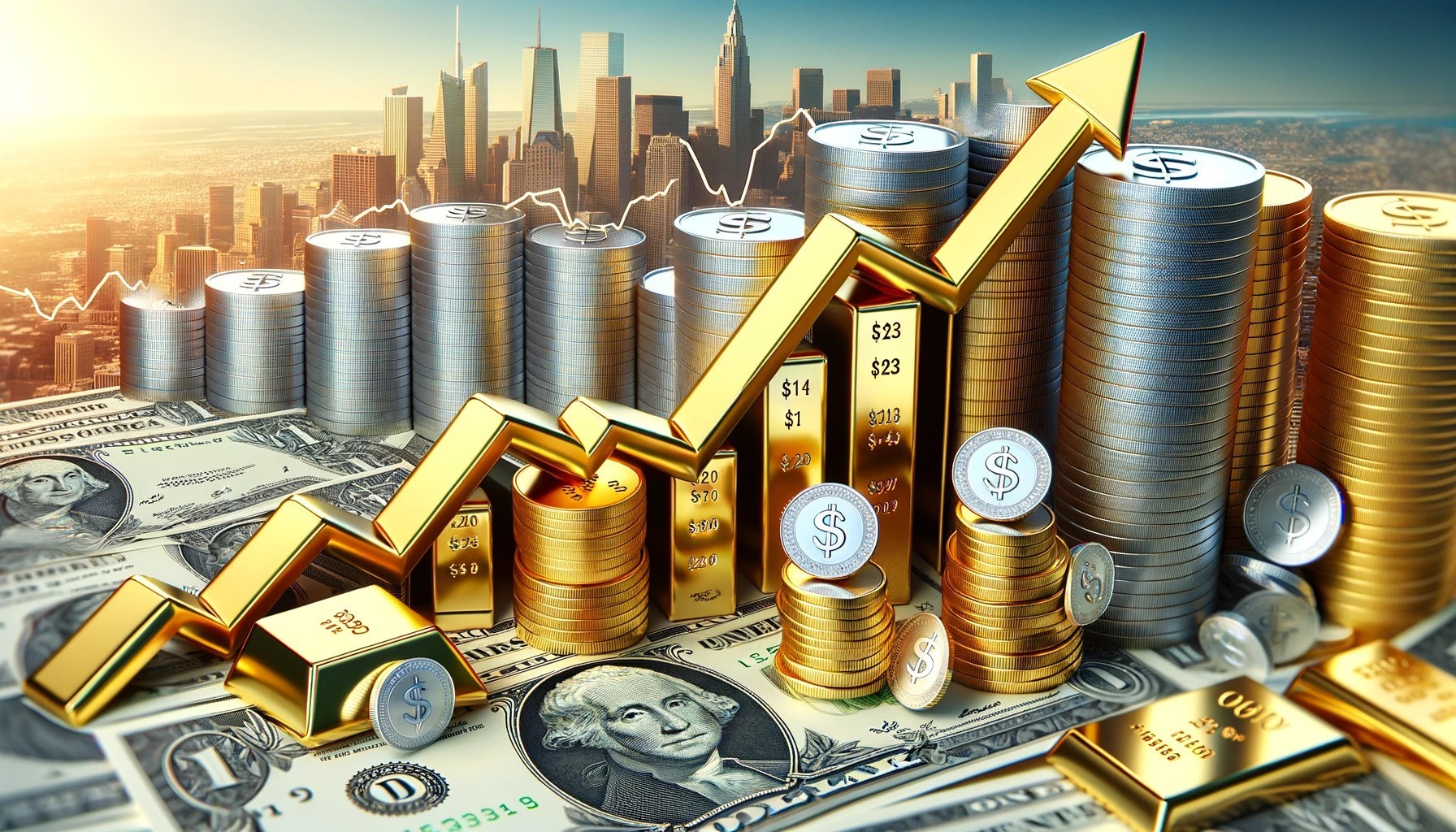(Mike Gleason, Money Metals News Service) As the Federal Reserve confirms plans to cut interest rates later this year, Jay Powell’s shifty stance on inflation has left many Fed watchers scratching their heads – and others crying foul.
On Wednesday, Fed policymakers opted to keep their benchmark Funds rate unchanged for now, as expected. However, they also telegraphed three rate cuts in 2024.
Fed chairman Jerome Powell’s dovish remarks following the decision brought cheers from Wall Street and presumably the White House as well.
But Powell had a tough time telling a coherent story between prepared remarks and testimony on Capitol Hill. He admitted that inflation remains elevated above the Fed’s 2% target and said he can’t offer any assurance that it will come down.
But that’s okay because it’s not actually the Fed’s goal to see inflation come down – even though Powell thinks it’s currently too high. The Fed will view it as progress if inflation stays where it’s at. Because that will somehow mean inflation is on a path lower – even if it’s not actually moving lower.
It would probably require an advanced degree in Fedspeak to make sense of what the 2% inflation target actually means these days. But you can listen to Powell’s words for yourself and see if you can decipher what the heck he’s trying to say.
Jerome Powell:
Inflation is still too high. Ongoing progress in bringing it down is not assured, and the path forward is uncertain. We are fully committed to returning inflation to our 2% goal.
We’re not looking for inflation to go all the way down to 2%, that’s not what we’re looking for. What we want is just more evidence that will give us more confidence that inflation is on a path down to 2% sustainably. So, that will come in the form of good inflation readings, really.
We’d like to see more, good, relatively low inflation readings. We’re not looking for better inflation readings than we’ve had, we’re just looking for more of them. So, we’re just being careful. And because the economy is so strong and the labor market’s so strong, we think we can and should be careful.
If the economy really is “so strong” as Powell claims, and inflation is still running too high as he admits, then central bankers would seem to have a clear mandate to engage in monetary tightening, not easing. With the stock market already trading at record highs, more stimulus in the form of rate cuts could risk blowing up a massive bubble.
Jay Powell and company cannot articulate a clear rationale for rate cuts that makes any sense from the standpoint of the Fed’s mandate to pursue price stability. Powell’s attempt this week to justify a pivot toward easing was so nonsensical that critics say the real reason why the Fed is readying rate cuts is politics.
It is an election year, after all. And Democrats know that the economy falling into recession would be a disaster for the re-election prospects of Joe Biden. They want to keep the numbers propped up through November at all costs.
The Fed describes itself as an independent institution that is unmoved by politics. But a group of Senate Democrats led by ultra-liberal Elizabeth Warren apparently thinks the Fed can be moved by political pressure.
Warren and her allies are demanding the Fed cut rates as soon as possible. They say “green” jobs created by the so-called Inflation Reduction Act are at risk as the alternative energy sector struggles with high financing costs.
Warren is asking central bankers to effectively let inflation run hotter in the name of supporting Biden’s Green New Deal programs. These programs were sold to the public under the guise of “inflation reduction.” The irony apparently doesn’t register with Elizabeth Warren.
In any event, investors should prepared for high inflation to persist. Inflation risks may be to the upside near term as the election approaches and new stimulus schemes get rolled out.
The price direction of precious metals markets may also be to the upside in the months and years ahead. This week gold has been trading back up near record highs.
Metals markets faced the headwind of a rising U.S. Dollar Index this week. The Federal Reserve note gained against foreign currencies despite the Fed’s dovish embrace of rate cuts.
The dollar’s apparent relative strength may have more to do with trend-chasing capital flowing into U.S. equity and bond markets. Financial assets are getting a boost from expectations of lower rates. But by the time the first rate cut comes, investor enthusiasm may have already peaked.
When optimism fades and concerns about inflation and the economy come to the forefront, precious metals will likely have the opportunity to begin outperforming vulnerable financial assets.
Mike Gleason is a Director with Money Metals Exchange, a national precious metals dealer with over 500,000 customers. Gleason is a hard money advocate and a strong proponent of personal liberty, limited government, and the Austrian School of Economics. A graduate of the University of Florida, Gleason has extensive experience in management, sales, and logistics, as well as precious metals investing. He also puts his longtime broadcasting background to good use, hosting a weekly precious metals podcast since 2011, a program listened to by tens of thousands each week.

